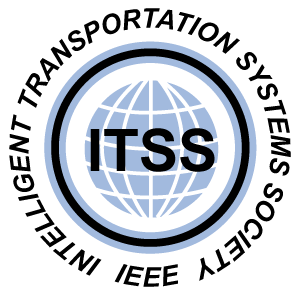2019 IEEE Vehicular Networking Conference (VNC)
December 4-6, 2019, Los Angeles, California
Call for Papers
The 2019 IEEE Vehicular Networking Conference (VNC) seeks to bring together researchers, professionals, and practitioners to present and discuss recent developments and challenges in vehicular networking technologies, and their applications. Topics of interest include, but are not limited to:
- 5G technologies for connected vehicles
- Innovative vehicular network applications (e.g., those in transportation safety, efficiency, and comfort as well as electrical vehicle and power grid integration) and their communication requirements
- Communications and networking for automated and semi-automated vehicles (e.g., collective perception, sensor data sharing, cooperative driving, cooperative maneuvering, cooperative intersections and highways, platooning)
- Field measurements and/or real-world deployments of vehicular networks and applications
- Impact assessments of vehicular networks on transportation (e.g., safety, efficiency, comfort, environmental sustainability)
- Modeling, design, as well as theoretical and empirical analysis of vehicular networks and applications
- Hardware and software platforms for the simulation, emulation, prototyping, measurement, and/or real-world deployment of vehicular networks and applications
- Emerging V2X communication and networking technologies such as cellular V2X (C-V2X), dynamic spectrum sharing, mmWave, massive MIMO, beamforming, and vehicular visible light communications (VLC)
- In-vehicle communication and networking systems (e.g., TSN, FlexRay, TT-CAN, and mmWave)
- Vehicular networking architectures and system design
- Novel physical layer communication technologies for vehicular networks
- Radio propagation aspects of vehicular networks (e.g., channel measurements, propagation models, antenna design)
- Vehicular MAC and link layer protocols (e.g., those for URLLC)
- Vehicular network layer protocols (e.g., real-time information dissemination)
- Transport control and middleware for vehicular network systems (e.g., congestion control, real-time messaging)
- Heterogeneous vehicular networking (e.g., multi-radio, multi-channel, multi-application, multi-technology)
- Network and QoS management for vehicular networks
- Security, privacy, liability, and dependability of vehicular networks
- Communications related to electric and hybrid vehicles
- Integration of V2C with on-board systems and networks
- Edge computing for vehicular applications
- Vehicular networks and IoT integration
All submitted papers will be peer-reviewed. A Best Paper Award will be given to a high-impact paper selected by a committee. Accepted papers will appear in the conference proceedings and will be archived in the IEEE Xplore Digital Library.
Manuscript submissions
The submitted papers must be written in English and be formatted in the standard IEEE two-column format and with a font size no less than 10-point. The mandatory IEEE template in Microsoft Word and LaTeX format can be found at the IEEE templates page. Only Adobe PDF files will be accepted for the review process. All submissions must be made electronically through EDAS.
The conference will consider four categories of submissions:
- Full papers should describe novel research contributions and are limited in length to eight (8) printed pages including figures, tables, and references. Papers exceeding 8 pages will be declined automatically and will not be reviewed.
Short papers should be more visionary in nature and may report on work-in-progress without fully finished results. They are meant to present novel perspectives, so as to foster discussions about innovative directions and new points of view. They are limited to at most four (4) pages including figures, tables, and references, but might in many cases be even shorter. Accepted short papers will be included in the proceedings and will be given (a shorter) time for oral presentation at the conference.
Please note that the full paper and short paper categories target different kinds of contributions. Papers submitted to a category will NOT be moved to a different category: a paper will either be accepted for the category where it has been submitted, or it will be rejected. Full papers will not be “downgraded” to short papers. Therefore, please be sure to carefully assess for yourself prior to submission which is the most suitable submission category for your paper, and to make sure that the presentation in the manuscript is well suited to the aims of this category.
Posters are especially suited for presenting controversial research directions that may generate discussion, or promising ideas not yet fully validated through complete extensive evaluation.
Demonstration (demo) papers are suited for researchers to showcase their latest prototypes with media, models, or live demonstrations. The demo session will be co-located with the poster session to ensure maximum visibility and a close interaction with the conference audience.
Poster/demo papers should be 2-page papers following standard IEEE 2-column format using 10-point font. All paper submissions must be written in English. The title of the paper should begin with either "Poster:" or "Demo:".
Important Dates
- Full/short paper submission deadline:
-
September 22, 2019, 23:59 AOE
(Anywhere on Earth, UTC-12)
(extended and final)
- Demo/Poster paper Submission Deadline:
-
October 7, 2019, 23:59 AOE
(Anywhere on Earth, UTC-12)
(extended and final)
- Acceptance notification:
- October 22, 2019
- Camera ready paper due:
- November 4, 2019
- Conference:
- December 4-6, 2019




